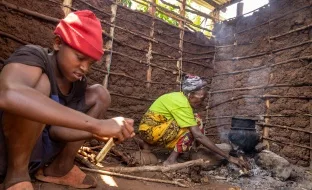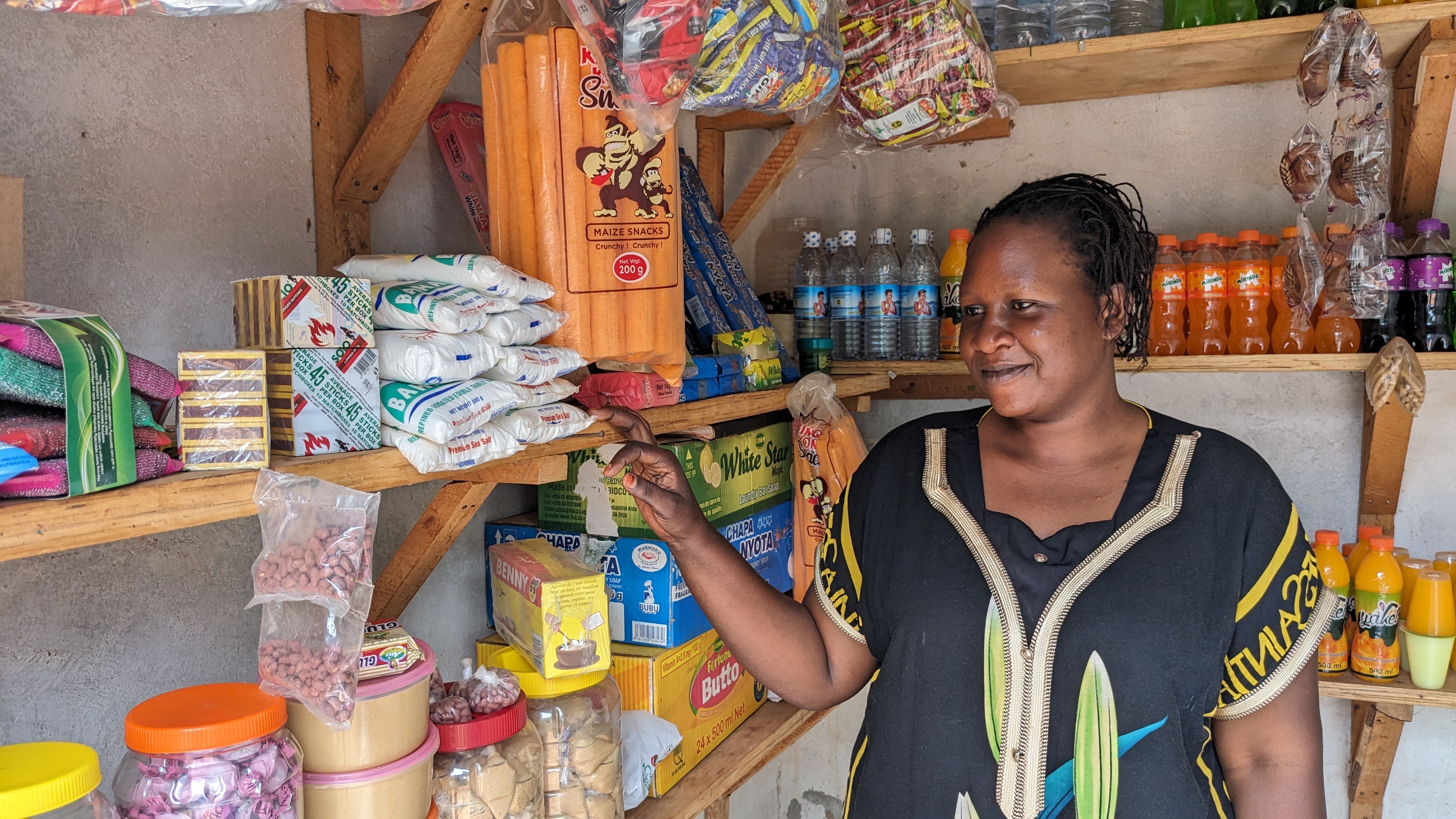Summary
- When a disaster strikes, many survivors receive food, tarps and other goods – but not cash.
- This is because responders are not prepared to deliver cash, often taking months to do so.
- After the Turkey earthquakes in February, GiveDirectly launched a cash response to test what could be done to quickly deliver cash to disaster survivors.
People impacted by disasters need cash aid, but rarely receive it
People impacted by a crisis prefer cash relief over in-kind aid (e.g. food, tarps), as it allows them to meet their own needs rather than having others guess for them. Decades of evidence show giving cash improves basic needs like food security and also supports local economies. And the technology exists to deliver funds quickly, efficiently, and securely.
However, responders are not pivoting from in-kind aid fast enough. Research shows that a third to half of all international humanitarian assistance could be cash-based, but only one-fifth of relief assistance is given as cash or vouchers.
Responders aren’t opposed to delivering cash but, rather, are resistant to investing enough to overcome the logistical obstacles that would allow them to do so.
Handing out free stuff is easier for responders, but worse for recipients
Imagine what you’d be up against if you tried to launch a response hours after the Turkey-Syria earthquakes earlier this year: millions of people are displaced in different directions, local governments are introducing new regulations by the day, access routes to affected areas are yet to be identified, and donors are undecided about how much to fund and under which requirements.
In the face of so much uncertainty, “what’s in the warehouse?” is the first question many emergency responders ask themselves. Even though responders know cash aid is likely more useful for survivors, in-kind aid is simpler for them. It helps that donors worry less about what will happen to a bag of rice or a bar of soap than a $500 transfer. All you have to do is find a way to get it there and someone to give it to.
To deliver cash aid you need to know the names of people in need, whether they have a phone (and their number), whether they can read, which local language they speak, and whether their local stores are open and functioning.
If you were that responder and have a warehouse full of stock, wouldn’t you also start by clearing that out?
Delivering cash aid after an emergency is possible but takes preparation
For decades, humanitarian first-responders have spent much more resources and time filling up warehouses and contracting logistics services (known as ‘prepositioning’) than preparing to deliver cash.
What would it take to properly preposition cash so it was more appealing to use than in-kind when emergency strikes? GiveDirectly decided to take up the challenge. In February we deployed a response to support survivors of the Turkey-Syria earthquake living in poverty with rapid cash assistance. Here is what we learned.
Target with remote data and on-the-ground information
After the earthquake, there were two questions we had to answer immediately:
- Who should we send money to in order to maximize impact?
- Where will markets and services recover fast enough to provide people with what they need?
First, we analyzed satellite-based poverty and earthquake damage data to identify the geographic areas where we expected people most in need to be located. Using data from the UN-led coordination system, we narrowed in on areas with the highest populations of Syrian refugees, likely to be the most vulnerable survivors, and least number of other humanitarian responders.
Then, we engaged networks of local volunteers, civil organizations, and local nonprofits to identify which households were most vulnerable and verify that markets were recovering. A few days and many phone calls later, we had all we needed:
- A clear sense of who was hardest hit and at highest risk of exclusion from other response programs: refugee-owned micro businesses and low-income refugee households with disrupted livelihoods
- Mapping of functioning and recovering shops and services, which gave us confidence that cash would help people meet their needs
- Recommendations on how to best contact recipients and collect information in a way that is both user-friendly and accurate
Ultimately, this approach meant your donations reached the most vulnerable:
- 94% of recipients had their homes completely destroyed or damaged
- 91% were either unemployed or informal workers when they were registered.
- 80% were Syrian refugees.
And the funds helped them get back on their feet:
- 87% of low-income households used their transfer to buy food for their families or pay back debts and rent.
- 85% of business-owners reported using the money repairing and keeping workplaces open, covering salaries, and covering other expenses.
Have a plan to navigate political nuances
A few weeks after the Turkey earthquake, we’d cleared our biggest hurdle: our payment solution was set-up and we’d started sending ~$500 transfers to recipients. However, two weeks later we were taken by surprise when our Turkey-based payment partner had to pause all transfers for non-profits due to increased government scrutiny. We worked around the clock to figure out what happened, set-up a new payment solution, and resumed transfers.
In retrospect, we could have better anticipated this risk. With an upcoming general election, the Turkish government was under pressure to manage the earthquake response well. Local actors expected the government to increase limitations and regulation on foreign cash flowing into the country in an effort to more closely monitor the response.
To work around this regulatory interruption, we switched to partner with a Turkish nonprofit using the national financial system to reach recipients. Had we gone with a national rather than foreign payment provider originally, we could have avoided this interruption and reached more people sooner. Next time we set up payments, we’ll look more closely at the political context and prepare a plan B from the start.
Donors need to commit cash relief before the next disaster
We had to determine the size of our Turkey response at the same time as we fundraised for it, a difficult position to be in. People had immediate needs, so we couldn’t wait for donors to make up their minds to finalize the design and start delivering money. With more cash already on hand, we could have better optimized our program and reached more people in need quicker.
For the past two decades, humanitarian organizations have pushed to preposition in-kind relief goods in warehouses around the world. Why haven’t we done the same with cash? We could have bank accounts of disaster relief money waiting to be deployed to those most in need immediately, rather than hustling to fundraise after the headlines hit.
However, for many donors and institutions, the idea of cash sitting in an account is scarier than having millions of dollars worth of stuff in a warehouse. Yet, we face the same challenges responding to last week’s earthquake in Morocco as we did in Turkey, waiting for cash to come after the disaster.
Funders need to commit cash even when their heartstrings aren’t being pulled. Otherwise emergency responders will have no choice but to keep filling their warehouses, even in cases when they know cash is better.
GiveDirectly will continue to grow our design and technological expertise to break down the logistical barriers for delivering immediate emergency cash. By more consistently, quickly and publicly responding to disasters, we hope to lead by example. But will funders follow suit by pre-committing cash relief money? We hope so.

